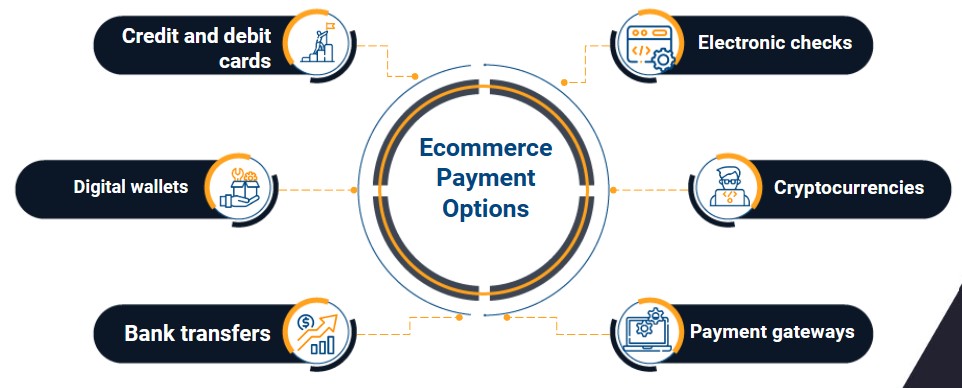In recent years, e-commerce has transformed the sector, shifting people' buying patterns from visiting stores and shopping malls to just getting what they want from their phone or computer.
This form of purchase and sale has inspired the development of many payment options, in addition to the traditional credit card, to incentivize and facilitate the user's purchase of your items or services.
Ecommerce Payment Options
When creating an eCommerce website, it is critical to provide a choice of payment alternatives to accommodate your consumers' preferences and make the checkout process as simple as possible. The following are some common eCommerce payment options to consider:
- Credit and debit cards are accepted, including Visa, Mastercard, American Express, and Discover. Debit cards bearing the logo of a credit card are also widely accepted.
- PayPal, Apple Pay, Google Pay, and Samsung Pay are all popular digital wallet solutions. Customers can use these to securely save their payment information and conduct rapid transactions.
- Bank Transfers: Allow clients to pay directly from their bank accounts using methods such as ACH (Automated Clearing House) transfers or internet banking.
- Customers can pay with e-checks, which are a digital counterpart of traditional paper checks.

- Buy Now, Pay Later (BNPL): Collaborate with BNPL providers such as Klarna, Afterpay, or Affirm to offer installment payment options, making more expensive items more affordable.
- Some e-commerce businesses accept cryptocurrencies such as Bitcoin and Ethereum. Please keep in mind that this option may necessitate a more sophisticated setup.
- Accept prepaid gift cards and prepaid credit cards as payment methods.
- Cash on Delivery (COD): This service allows clients to pay in cash when their product is delivered. This is more typical in some places and for certain items.
- Customers can make payments by placing cash or checks into their bank accounts. Give them the relevant account information.
- Mobile Payments: If your target audience commonly uses these services, enable mobile payment choices via apps such as Venmo, Zelle, or Cash App.
- If you sell overseas, consider giving multi-currency support so that clients can pay in their preferred currency.
- Gateways for payments: To process payments securely, use trusted payment gateways such as Stripe, PayPal, Square, or Braintree. These payment gateways often provide a number of payment choices.
Your payment options should correspond to the preferences of your target audience and the geographies you service. Payment methods should also be updated on a regular basis to stay up with changing client preferences and industry trends.
What is the best payment option for e-commerce?
There is no single "best" eCommerce payment option that applies to all businesses because the appropriate option is determined by various aspects such as your target audience, the type of your items or services, and your business objectives. Some payment methods, however, are more widely utilized and versatile than others.
The "best" option for your eCommerce business will be determined by criteria such as your target audience's preferences, geographic region, and the types of products or services you sell. Offering a variety of payment alternatives to accommodate diverse consumer preferences is frequently a wise strategy.
When selecting your payment methods, consider transaction fees, security, simplicity of integration, and customer support. Whatever payment option you select, ensure sure it is secure and adheres to payment industry norms and standards. Conduct market research, keep track of client preferences, and be willing to change your payment alternatives as your company grows.
We recommend you on video


